I've been struggling to understand how to get to this expression without knowing about re model (actually, still knowing about it, I can't get to understand this).
In a BJT in, how does one get to Zi = hie+1(1+hfe)RE from the Hybrid Model on an unbypassed emitter configuration?
I saw someone saying it had to do with seeing the resistance from a different terminal it is in, and we had to "move" the (1+hfe) from the current part to the resistance, and this last part is cool to me, I think. Though... I can't understand why we must do this, since I've never done it when calculating the equivalent resistance on a circuit. I also saw it might have to do with having a dependent current source. Though, in my way of viewing this, if Zi is calculated with Vi = 0 V by definition, then the current source evaluates to 0 A and there's no current there --> open circuit, we cut from there and just remains a series of hie with RE (Zi = hie+RE), and that's wrong and I don't get why they're not in series if I just cut the source from there as I always do with the other circuits (the problem might be with the dependent source which I might not be understanding well, but I have no idea).
I've been looking in Electronic Devices and Circuit Theory and in Integrated Electronics Analog and Digital Circuits, but I can't find an explanation of there that comes from without mentioning the re model. If they're equivalent expressions, I'd just like to know how it works, so that they are indeed equivalents not just by the picture but also from the calculus and it would make sense in my head (might also help me understand something I didn't know I didn't understand, as a start).
Bonus: could anyone explain me (or point me to an explanation - that works for the other question too) how to get to that expression, even if from knowing about the re model? Zi = (beta+1)re and Zi = (beta+1)RE --> absolutely no idea how to get to the second from the first one. But maybe that has to do with the first question. Sorry, I'm confused.
Thank you in advance for any help on getting this.
EDIT: maybe I should have mentioned I'm interested not in any hybrid model, but in the h-parameters model. I thought Hybrid Model would lead immediately to h-parameters model (isn't it called only Hybrid Model?).
EDIT 2: I'll accept Verbal Kint's as it is the one that helped me understand the dependent sources (or at least a bit more than I did) with help of a friend removing some wrong ideas (or at least that didn't make sense for me) I had been put in my mind by other people. Though, LvW's answer helped too in understanding a bit better first how to deal with this without going to any models, so thank you both, and I'll accept the one I said because it's the one I'll use more, possibly (we haven't learned much about Control Theory yet, so I didn't completely understand but with time I will). Also sorry, don't have enough reputation, but I hope the 3 people get the upvote I sent. Even though analogsystemsrf's answer didn't help me on what I needed, helped clear something else on my mind so also thank you for that. This is a big text...


